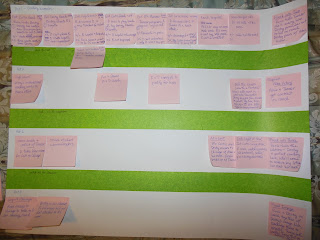Manuscript Makeover Part 2: Plot
Most beginning writers plot by the seat of their pants. In other words, they don't use an outline. There are advantages to avoiding an outline--your story can feel less predictable and more creative, but you're most likely going to have trouble delivering a satisfying ending.
I recommend that even if you write by the seat of your pants, you organize or outline your plot after the first draft. There are two ways to do this.
First, you can borrow a plot from another story. (People often do this by following the plot of a fairytale or classic novel.)
Second, you can make an outline. I struggled a lot with outlining when I first began writing, and I eventually came up with a handful of resources that help me. Here are a few:
Watch Dan Wells' YouTube class on story structure here. It's a five-part series, and I recommend that you watch all five videos while taking notes.
Read about Blake Snyders’ Three
Act structure in Save the Cat.
Experiment with the Snowflake Method before you write.
Learn about the Hero’s Journey
If none of these work for you, you might look over Freytag’s Pyramid. (This is the five part structure you most likely learned about in elementary school: exposition, rising action, climax, falling action, and
resolution.)
As you strengthen your plot, you'll find ways to add tension to your story and pull off a better ending.

Comments
Post a Comment